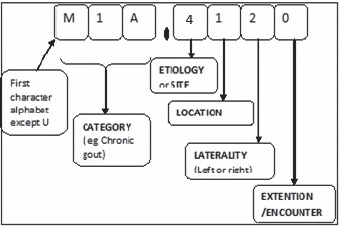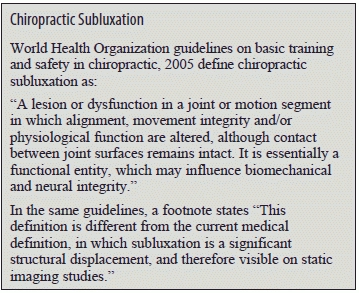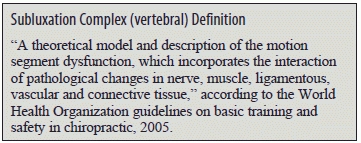Take on the Most Used "Pain in the Neck" Codes in ICD-10
Master cervical subluxation, sprain, strain and more.
October 2015 will change the way you code for your diagnoses of neck pain. Take a sneak peak at some expected changes and prepare yourself to ease the transition by taking notes.
Background: With the advances in medical sciences, it’s about time we embrace the all new ICD-10 which brings with it new ways to code. Tapping the potential for expansion, each code is designed to contain lots of information.
Most of us may know the ICD-10 structures by now. Here’s the anatomy of an ICD-10 code as a refresher. Let’s take an example of M1A.4120 (Other secondary chronic gout, left shoulder, without tophus (tophi)).
Anatomy of an ICD-10 code
One of the most important parts of ICD-10 transition preparation is ensuring you’ve planned ahead to get the specific documentation you need to choose the most appropriate code.
“Review current documentation to make sure you will be ready for ICD-10. There are webinars available through the ACA. Also, involve a staff member to help keep you on track with preparing and training.” says Doreen Boivin, CPC, CCA, with Chiro Practice, Inc., in Saco, Maine.
For cervical region disorders, that means making it simple for your physician to capture the nature of the disorder based on ICD-10 categories. Here are the areas to watch for cervical region disorders.
Revisit Your Understanding of Chiropractic Subluxation
ICD-9 does not really give the definition of subluxation as it relates to the chiropractic profession. Therefore, DCs use 739.x (Nonallopathic lesions, segmental or somatic dysfunction) and 839.x (Other, multiple, and ill-defined dislocations) to indicate a diagnosis of chiropractic subluxation.
Certain insurance payers have created local coverage determinations about the ICD-9 codes that describe subluxation.
In some states, chiropractic laws specify subluxation as the only acceptable diagnosis from a chiropractor. “A subluxation diagnosis helps to process the claims more appropriately. By not having a subluxation diagnosis as primary it could delay the claims and getting reimbursed,” explains Boivin.
Example 1: Let’s take ICD- 9 CM code 739.1(Nonallopathic lesions of cervical region not elsewhere classified), which includes segmental dysfunction somatic dysfunction.
If you use the GEM calculator, it directs you to the best match of M99.01 (Segmental and somatic dysfunction of cervical region). Remember that category M99 (Biomechanical lesions, not elsewhere classified) splits into ten possibilities; including these for the head and spine:
Example 2: Suppose you have to report code 839.0 (Closed dislocation cervical vertebra), listed within category 839 (Other, multiple, and ill-defined dislocations). Code 839.0 includes “displacement, subluxation” and excludes “congenital, pathological or recurrent dislocations.” In ICD-10 the best match is M99.11 (Subluxation complex [vertebral] of cervical region). Category M99.1 (Biomechanical lesions, not elsewhere classified) gives you ten possibilities based on the location of the subluxation, including these for the head and spine:
Remember: The ICD-10 codes represent greater details and specificity. The digit after the decimal point represents the subcategory code describing the site, etiology, manifestation, or state of the disease or condition.
Discover Wider Options for Neck Sprain and Strain Coding
In ICD-9, neck sprain and strain have a common code: 847.0 (Neck sprain) under category 847 (Sprains and strains of other and unspecified parts of back). However, this is going to change with the advent of ICD-10 when chiropractors will have separate codes for sprain and strain of the neck region.
You will code for neck sprain using S13 (Dislocation and sprain of joints and ligaments at neck level). This code includes:
You’ll also have codes further on for other parts of the cervical regions such as:
However, for neck strain you will have a different code S16.1 (Strain of muscle, fascia and tendon at neck level).
Editor’s Note: Look for ICD-10 options for some more common chiropractic conditions in the next issue. 



